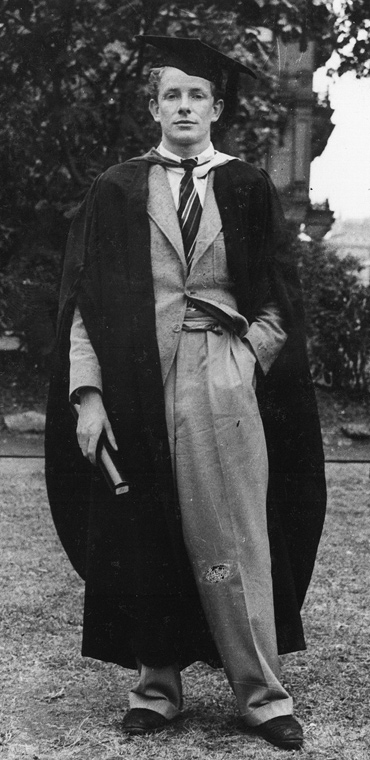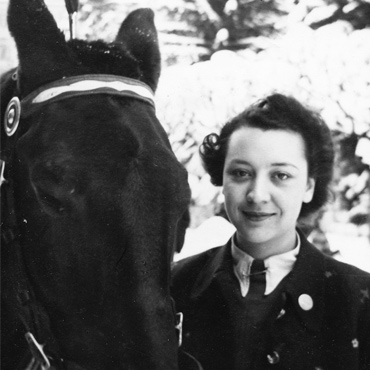Robin Day
1930sRobin Day
1940s Robin Day
Robin Day 1940s
Read more
 Prize-winning design for MoMA International Low-Cost Furniture Design Competition, Robin Day and Clive Latimer
Prize-winning design for MoMA International Low-Cost Furniture Design Competition, Robin Day and Clive Latimer1948
Heal's
Read more
 Ekco Exhibition stand at Radiolympia, Robin Day
Ekco Exhibition stand at Radiolympia, Robin Day1950
Read more
 Jet exhibition poster, Robin Day
Jet exhibition poster, Robin Day1946
Ministry of Supply
Read more
 RAF recruitment poster: They rely on me in the RAF, Robin Day
RAF recruitment poster: They rely on me in the RAF, Robin Day1948
Royal Air Force
Read more
 Exhibition stand for ICI at British Industries Fair, Robin Day and Basil Spence
Exhibition stand for ICI at British Industries Fair, Robin Day and Basil Spence1947
Read more
Robin Day
Festival of Britain Robin Day
Robin DayFestival of Britain
Read more
 Festival of Britain signage, Milner Gray, Robin Day, Sylvia Read, Kenneth Lamble and John Messenger
Festival of Britain signage, Milner Gray, Robin Day, Sylvia Read, Kenneth Lamble and John Messenger1951
Read more
 Royal Festival Hall Orchestra Chairs, Robin Day, in situ in the auditorium at the Royal Festival Hall
Royal Festival Hall Orchestra Chairs, Robin Day, in situ in the auditorium at the Royal Festival Hall1951
Kingfisher Ltd
Read more
 Royal Festival Hall Lounge Chairs, Robin Day, in situ at the Royal Festival Hall
Royal Festival Hall Lounge Chairs, Robin Day, in situ at the Royal Festival Hall1951
Hille
Read more
 Royal Festival Hall Dining Chair, Robin Day
Royal Festival Hall Dining Chair, Robin Day1951
produced by Hille as 661 Small Moulded Chair
Read more
 Royal Festival Hall Lounge Chair, Robin Day
Royal Festival Hall Lounge Chair, Robin Day1951
produced by Hille as 658 Chair
Read more
 Low-cost living room/dining room for Homes and Gardens Pavilion, Festival of Britain, Robin Day
Low-cost living room/dining room for Homes and Gardens Pavilion, Festival of Britain, Robin Day1951
Read more
Lucienne Day
Festival of Britain Lucienne Day
Lucienne DayFestival of Britain
Read more
 Living room/dining room setting at the Milan Triennale, Robin Day, featuring furniture and lighting designed by Robin Day and Calyx furnishing fabric by Lucienne Day
Living room/dining room setting at the Milan Triennale, Robin Day, featuring furniture and lighting designed by Robin Day and Calyx furnishing fabric by Lucienne Day1951
Read more
 Calyx screen-printed furnishing fabric, Lucienne Day
Calyx screen-printed furnishing fabric, Lucienne Day1951
Heal’s Wholesale and Export
Read more
 Diabolo wallpaper, Lucienne Day
Diabolo wallpaper, Lucienne Day1951
Cole & Son
Read more
 Provence wallpaper, Lucienne Day
Provence wallpaper, Lucienne Day1951
John Line & Son
Read more
Robin Day
1950s Robin Day
Robin Day 1950s
Read more
 Robin and Lucienne Day's living room at 49 Cheyne Walk, London
Robin and Lucienne Day's living room at 49 Cheyne Walk, London1954
Read more
 Hillestak chair, Robin Day
Hillestak chair, Robin Day1951
Hille
Read more
 Interplan Unit U (chest of drawers), Robin Day
Interplan Unit U (chest of drawers), Robin Day1954
Hille
Read more
 Reclining chair, Robin Day
Reclining chair, Robin Day1952
Hille
Read more
 675 Chair, Robin Day
675 Chair, Robin Day1952
Hille
Read more
 Slatted bench, Robin Day
Slatted bench, Robin Day1954
Hille
Read more
Lucienne Day
1950s Lucienne Day
Lucienne Day 1950s
Read more
 Lapis curtain fabric, Lucienne Day
Lapis curtain fabric, Lucienne Day1953
Heal's Wholesale & Export
Read more
 Dandelion Clocks screen-printed furnishing fabric, Lucienne Day
Dandelion Clocks screen-printed furnishing fabric, Lucienne Day1953
Heal's Wholesale & Export
Read more
 Spectators furnishing fabric, Lucienne Day
Spectators furnishing fabric, Lucienne Day1953
Heal's Wholesale & Export
Read more
 Lucienne Day with Paula as a baby
Lucienne Day with Paula as a baby1954
Read more
 Graphica screen-printed furnishing fabric, Lucienne Day
Graphica screen-printed furnishing fabric, Lucienne Day1953
Heal's Wholesale & Export
Read more
 Trio furnishing fabric, Lucienne Day
Trio furnishing fabric, Lucienne Day1954
Heal Fabrics
Read more
 Magnetic furnishing fabric, Lucienne Day
Magnetic furnishing fabric, Lucienne Day1957
Heal's Wholesale & Export
Read more
Robin Day
1960s Robin Day
Robin Day 1960s
Read more
 Polypropylene chairs and armchairs, Robin Day
Polypropylene chairs and armchairs, Robin Day1964, 1967
Hille
Read more
 Polypropylene chair, Robin Day, at 1968 Mexico Olympics
Polypropylene chair, Robin Day, at 1968 Mexico Olympics1964
Hille
Read more
 Form Group modular seating, Robin Day, 1960, in use in the home of Rosamind and Leslie Julius of Hille
Form Group modular seating, Robin Day, 1960, in use in the home of Rosamind and Leslie Julius of HilleRead more
 Model 1108 radio, Robin Day
Model 1108 radio, Robin Day1965
Pye
Read more
 Gouache design of VC10 aircraft interior, Robin Day
Gouache design of VC10 aircraft interior, Robin Day1967
BOAC
Read more
 Forum Armchair, Robin Day
Forum Armchair, Robin Day1964
Hille
Read more
Lucienne Day
1960s Lucienne Day
Lucienne Day 1960s
Read more
 Ilias tableware, Lucienne Day
Ilias tableware, Lucienne Day1962
Rosenthal
Read more
 Black Leaf tea towel, Lucienne Day
Black Leaf tea towel, Lucienne Day1959
Thomas Somerset
Read more
 Too Many Cooks tea towel, Lucienne Day
Too Many Cooks tea towel, Lucienne Day1959
Thomas Somerset
Read more
 Octagon machine woven carpet, Lucienne Day
Octagon machine woven carpet, Lucienne Day1964
Wilton Royal Carpet Factory Ltd
Read more
 Lucienne Day with Michael Tomkinson of Tomkinson’s Carpets
Lucienne Day with Michael Tomkinson of Tomkinson’s Carpets1960
Read more
 Larch furnishing fabric, Lucienne Day
Larch furnishing fabric, Lucienne Day1961
Heal Fabrics
Read more
 Apex furnishing fabric
Apex furnishing fabric1967
Heal Fabrics
Read more
Robin Day
1970sLucienne Day
1970s Halloween furnishing fabric, Lucienne Day
Halloween furnishing fabric, Lucienne Day1975
Cavendish Textiles
Read more
 Lucienne Day
Lucienne Day 1970s
Read more
 Lucienne screen-printed furnishing fabric, Lucienne Day
Lucienne screen-printed furnishing fabric, Lucienne Day1974
Cavendish Textiles
Read more
 Helix furnishing fabric, Lucienne Day
Helix furnishing fabric, Lucienne Day1970
Heal Fabrics
Read more
 Parkland furnishing fabric, Lucienne Day
Parkland furnishing fabric, Lucienne Day1974
Heal Fabrics
Read more
Robin Day
1980sRobin Day
1990sRobin Day
2000sLucienne Day
2000sText copyright
© Lesley Jackson and Paula Day 2014


